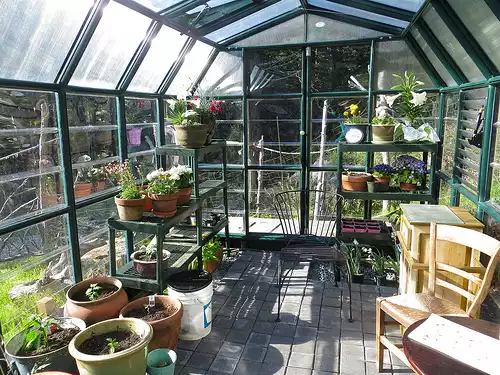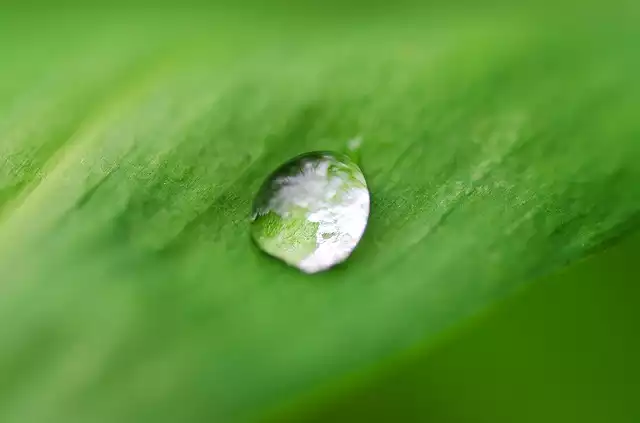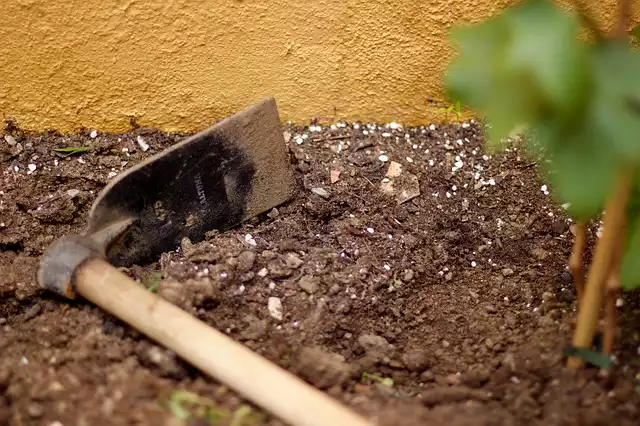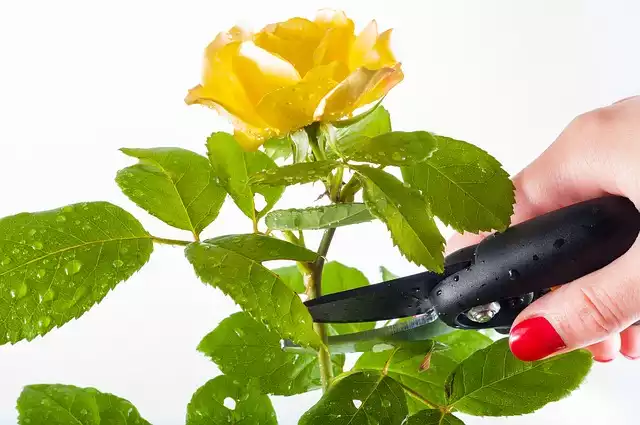Greenhouse coverings
As the sun arches across the sky, casting its life-giving rays upon the earth, a silent sentinel stands guard over our precious crops: the greenhouse.
Within these transparent fortresses, a crucial choice impacts everything from light transmission to insulation — greenhouse coverings.
This seemingly simple decision is anything but trivial; it’s an intricate dance with nature, technology, and ambition.
The right covering can turn a barren plot into a verdant paradise or elevate an ordinary harvest into an extraordinary bounty.
In this deep dive into the world of greenhouse coverings, we’ll unwrap the layers that make these materials more than just a barrier between plants and the elements.
From polyethylene films that cling tightly to their frames like a second skin to polycarbonate panels that scatter sunlight as if it were sown by celestial hands, each option tells a story of innovation and adaptation.
Join us as we explore how these unsung heroes of horticulture are shaping not only our greenhouses but also our future in sustainable farming and food security.
Table of Contents Greenhouse coverings
Types of Greenhouse Coverings
Greenhouse coverings come in various types, each with its own unique characteristics and benefits.
Glass: Glass coverings provide excellent light transmission and durability, making them a popular choice for traditional and commercial greenhouses.
Polycarbonate: Polycarbonate panels offer high impact resistance and thermal insulation, making them suitable for regions with extreme weather conditions.
Polyethylene: Polyethylene films are affordable and widely used due to their flexibility and ability to retain heat, making them ideal for small-scale or temporary greenhouses.
Acrylic: Acrylic coverings offer high light transmission and UV resistance, allowing for optimal plant growth while protecting against harmful radiation.
Fiberglass: Fiberglass coverings are lightweight, durable, and provide good light diffusion, reducing the risk of plant damage from direct sunlight.
Choose the greenhouse covering that best suits your specific needs, considering factors such as climate, budget, and desired light transmission.
Glazing or Covering
The heart of any greenhouse is its glazing or covering.
The glazing of a greenhouse will determine how well the greenhouse captures and retains heat and also how well the light needed for plant growth is transmitted.
As is usually the case when it comes to greenhouses, there is a wide variety of different types of glazing for the different greenhouses out there.
The choice of glazing or covering is crucial for the performance of a greenhouse.
It directly affects the greenhouse’s ability to trap heat and allow sufficient light for optimal plant growth. There is a diverse range of glazing options available, catering to the specific needs of different types of greenhouses.
The selection of the appropriate glazing material is essential to create the ideal environment for plants and ensure the success of the greenhouse operation.
Polycarbonate is an extremely durable plastic
The most common glazing that you will find for hobby greenhouses is polycarbonate.
Polycarbonate is an extremely durable plastic material that does a great job of insulating the greenhouse and diffusing sunlight.
This is especially the case now that most commercial polycarbonate is sold with UV protective coatings to help resist any degradation of the panels.
Single layer polycarbonate is seen on less expensive greenhouses and offers a good value for growers in climates with mild winters.
With the addition of UV protective coatings, commercial polycarbonate panels are more resistant to degradation.
Polycarbonate is the most commonly used glazing material for hobby greenhouses. It is a highly durable plastic that provides excellent insulation and diffuses sunlight effectively.
Nowadays, commercial polycarbonate panels are sold with UV protective coatings to prevent degradation.
Single Layer Polycarbonate
A greenhouse like the Rion Silverline or Enthusiast offers great performance at very economical prices due to their use of clear, single layer polycarbonate.
We recommend shade cloths to ensure that harsh sunlight if diffused before it hits your plants to protect against hot spots on clear days
More commonly, you will see that most hobby greenhouse kits use twin wall polycarbonate.
The advantages of twin-wall polycarbonate are that you get much better insulation in cold weather and light is diffused in the greenhouse.
Different greenhouse kits will use different thicknesses of glazing.
Typically, the range is from 4 millimeters up to 10 millimeters. Generally speaking the thicker the glazing, the better the insulation (or R-factor) will be. In our experience, the biggest improvement comes from stepping up from 4 millimeter to 6 millimeter polycarbonate.
Going up to 8 and 10 millimeter thicknesses does give better insulation but the increase isn’t as great.
Twin Wall Polycarbonate
Although twin wall polycarbonate is now the standard in the industry, that doesn’t mean that all polycarbonate is the same.
Advanced Plastics has developed an innovative polycarbonate solution that they use on their Solexx line of greenhouses Solexx panels offer superior light diffusion and are available in 3.5 mm thickness and a 5 mm thickness for severe winter climates.
Although some people aren’t fond of the white appearance, there’s no arguing with the results!
The latest word on Polycarbonate is triple wall polycarbonate.
This provides the ultimate in insulation and because the flute spacing is wider than in twin wall polycarbonate, light transmission is relatively similar.
Currently, we only offer Triple wall polycarbonate on our top of the line Grand Hideaway Greenhouses.
Polyethylene films and laminates
A much less expensive alternative is Polyethylene films and laminates.
You will see laminated polyethylene on greenhouses like the Weatherguard series or the Flowerhouse line of greenhouses.
This style of covering is relatively durable and easily replaced after it wears out.
Alternatively, you will find some greenhouses that use a polyethylene film like the Easy2Build greenhouses .
The film on these greenhouses does a good job for the price and makes assembly simple.
The downside is that it is not as durable as polycarbonate.
This is why you usually see large commercial greenhouses use this type of covering.
It is cheap for them to cover their vast expanses and the expense of replacement is just built into their cost of doing business.
Glass Glazing
Finally, a word on glass glazing.
Glass is the traditional glazing for a greenhouse and, for its appearance and longevity, there isn’t anything comparable.
Typically, you will only see glass on the highest end greenhouses like Victorian Greenhouses and Grand Hideaways.
This is partly because of glass’s beauty but also because glass is the longest lasting, if not most durable, glazing material there is.
The other reason is that greenhouses that utilize glass glazing typically require heavier frames and professional contractors to help assembly.
Greenhouse Window Coverings
Greenhouse window coverings play a crucial role in the success of any greenhouse operation.
These coverings not only provide protection from harsh environmental conditions, but they also regulate the temperature and humidity levels inside the greenhouse, creating an ideal growing environment for plants.
With the rise of environmentally conscious practices, the demand for sustainable and energy-efficient greenhouse window coverings has increased significantly.
This has led to the development of various options, each with their own unique features and benefits.
In this article, we will explore the different types of greenhouse window coverings available in the market, their advantages and disadvantages, and how to choose the best one for your specific needs.
Whether you are a commercial greenhouse owner, a hobbyist gardener, or a novice in the world of gardening, understanding the importance and functionality of greenhouse window coverings is essential for achieving optimal plant growth and maximizing your greenhouse’s potential.
So, let us delve into the world of greenhouse window coverings and discover the best solutions for your greenhouse.
Efficiently regulate temperature with proper coverings
Investing in high-quality window coverings for your greenhouse is essential for efficiently regulating temperature and creating an optimal growing environment.
By carefully selecting coverings that offer insulation and UV protection, you can effectively control the amount of heat and sunlight entering your greenhouse.
This not only prevents overheating during the day but also helps retain warmth during colder periods.
Additionally, the right coverings can minimize heat loss at night, ensuring a stable and consistent climate for your plants.
By utilizing proper coverings, you can maximize energy efficiency, reduce your reliance on artificial heating or cooling systems, and ultimately promote healthy and thriving plant growth in your greenhouse.
Maximize natural light while insulating
To maximize natural light while still effectively insulating your greenhouse, it is important to consider the materials and design of your window coverings.
Opt for coverings that allow ample sunlight to penetrate through while providing a barrier against heat loss.
Utilizing double-glazed windows or incorporating insulation panels within your greenhouse windows can help to reduce energy transfer and maintain a consistent temperature.
Additionally, choosing coverings with high solar heat gain coefficients can help capture sunlight and convert it into usable heat energy within the greenhouse.
By carefully balancing the need for natural light and insulation, you can create a sustainable and energy-efficient environment for your plants.
Protect plants from harsh weather
One of the primary concerns when it comes to maintaining a greenhouse is protecting plants from the harsh effects of unpredictable weather conditions.
Sudden temperature drops, strong winds, heavy rains, and even hailstorms can pose a significant risk to the health and well-being of your plants.
Implementing proper strategies to safeguard them is crucial.
Installing appropriate shading systems can help regulate the amount of sunlight reaching the plants, preventing excessive heat buildup during scorching summers.
Additionally, incorporating ventilation systems that can be adjusted according to weather conditions allows for proper air circulation and minimizes the risk of heat stress or mold formation.
By proactively addressing these challenges, you can provide a controlled and secure environment for your plants, ensuring their optimal growth and protection against the elements.
In conclusion, choosing the right greenhouse window coverings is crucial for maintaining the ideal environment for your plants.
Whether you opt for traditional glass panes or modern options like shade cloth or polycarbonate panels, it’s important to consider your specific needs and the climate in which your greenhouse is located.
With the right coverings, you can protect your plants from extreme temperatures, pests, and harsh weather conditions, while also providing them with the necessary amount of sunlight for healthy growth.
By carefully selecting and properly installing your greenhouse window coverings, you can create a thriving and sustainable growing space for all your botanical endeavors.
FAQ
What are the benefits of using greenhouse window coverings?
Greenhouse window coverings provide insulation, regulate temperature, reduce heat loss, protect plants from frost, pests, and excessive sunlight, and help maintain humidity levels.
They also improve energy efficiency, prolong the growing season, and create a controlled environment for optimal plant growth.
Additionally, greenhouse coverings can increase privacy, prevent UV damage, and enhance the aesthetics of the greenhouse structure.
Overall, they contribute to healthier and more successful plant cultivation while minimizing external environmental impacts.
What types of materials are commonly used for greenhouse window coverings?
Common materials used for greenhouse window coverings include glass, polycarbonate panels, acrylic panels, polyethylene film, and shade cloth.
Glass provides durability and insulation but can be expensive.
Polycarbonate and acrylic panels offer similar benefits to glass but are lighter and more affordable.
Polyethylene film is a cost-effective option that provides good insulation but may need frequent replacement.
Shade cloth is used to regulate light and temperature inside the greenhouse.
Each material has its own advantages and is chosen based on factors like cost, insulation, durability, and specific greenhouse needs.
How do greenhouse window coverings help regulate temperature and humidity levels?
Greenhouse window coverings help regulate temperature by trapping heat inside the greenhouse during colder days and blocking excessive heat on warmer days.
They also help maintain humidity levels by preventing moisture from escaping too quickly, creating a more stable environment for plants to thrive.
By managing temperature and humidity, greenhouse coverings create an optimal growing environment that promotes healthy plant growth and development.
Are there any specific considerations to keep in mind when choosing greenhouse window coverings for different climates?
When choosing greenhouse window coverings for different climates, consider factors such as insulation, light diffusion, UV protection, and ventilation needs.
In colder climates, opt for coverings with greater insulation to retain heat, while in hot climates, choose coverings that offer shade and UV protection to prevent overheating.
Additionally, ensure coverings allow for adequate ventilation to regulate temperature and humidity levels.
Select materials that can withstand extreme temperatures and humidity levels to ensure longevity and optimal performance in varying climates.
Can greenhouse window coverings help protect plants from pests and diseases?
Yes, greenhouse window coverings can help protect plants from pests and diseases by creating a barrier that prevents direct contact with insects and pathogens.
Additionally, these coverings can regulate temperature and humidity levels, creating an environment that is less favorable for pest infestations and disease development.
Properly installed and maintained coverings can contribute significantly to the overall health and well-being of greenhouse plants.
Which is best?
As you can see, there are quite a range of options out there.
Which is best? It depends on your own growing goals and climate.
If we had to make a blanket recommendation, it would be hard to go wrong with a greenhouse that has twin wall polycarbonate glazing at lease 6 mm thick.
However, for other growers, a laminated polyethylene covering will meet their budgets and needs, while for others only glass will do!







